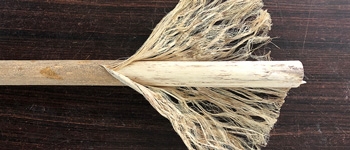
Hemp can be used for many different purposes and is therefore a versatile and sought-after product. Hemp has many benefits for our health and for society in general. It is a sustainable, fast-growing crop that needs little care or extra water than occasional rain showers. Read more about what hemp can do for the world in its diversity.
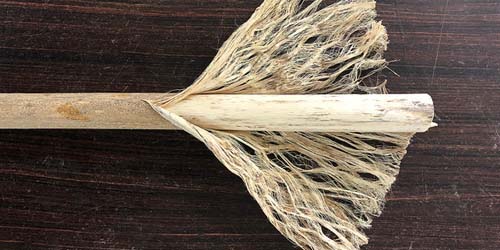
Hemp is extremely durable and versatile. But before we get into the applicability of this beautiful plant, let's discuss the terminology. Because what exactly is hemp? Is that the same plant as cannabis or weed?
Cannabis
When we talk about cannabis, it mainly refers to the parts or some types of cannabis plants that contain mind-altering substances. Weed, also known as marijuana, consists of dried flower buds of the species Cannabis sativa. Hash is then made from the resinous coating on these flower buds. Because weed is the main product of the cannabis plant, the plants are also called cannabis plants.
What are the differences between hemp and cannabis?
The terms hemp, marijuana and cannabis are often used interchangeably. Which term is correct depends on how the plant was grown, the legislation and even the strain.
The term cannabis is used to describe a Cannabis sativa plant or its products. Cannabis is an umbrella term, covering both hemp and weed.
Cannabis plants are grown for their powerful, resinous glands (also known as trichomes). In these trichomes you will find large amounts of cannabinoids such as tetrahydrocannabinol (THC) and/or cannabidiol (CBD). Cannabinoids work together with terpenes to make us feel a certain way. THC is the substance that makes us high or stoned. “High” is a term that describes the uplifting, spiritual intoxication we feel after smoking, vaping or otherwise consuming THC. “Stoned” describes a numb, sleepy and relaxed feeling in the body. Weed strains often carry exciting names such as White Widow, Amnesia Haze or Auto Gorilla Glue.
Hemp is an abbreviation for industrial fiber hemp. These plants were originally grown for the applicability of the long fibers and the consumption of hemp seed. Later other parts were also used. Examples of what you can do with hemp can be found later in this article. Some of the more famous hemp strains are Finola, Futura 75, Santhica and Felina.
Legislation around hemp
You might say: is there really a difference between weed and hemp? There is. The difference is even legislated in many countries. If we dive back in history a few hundred years, we see that weed (with a lot of THC) descends from the hemp plant. But today, industrial fiber hemp contains only negligible traces of THC. That is no coincidence. To be allowed to be called “hemp”, a number of rules apply. In the Netherlands and many other EU countries, we talk about industrial fiber hemp if:
- The plant belongs to one of the approved hemp strains.
- The THC percentage in the plant is below 0.2%.
So the dividing line is in fact the amount of THC in the plant. In the EU, an additional law ensures that not everyone is allowed to grow hemp plants. You can only grow hemp with a permit issued by the government, mandated by the European Commission. Without the hemp farmer’s permit, you might as well grow weed for the purposes of extracting THC or CBD. The reason is that growing either hemp or weed is illegal without one. It is virtually impossible to obtain such a permit as well. That's why you see very few hemp farms dotted around the EU.
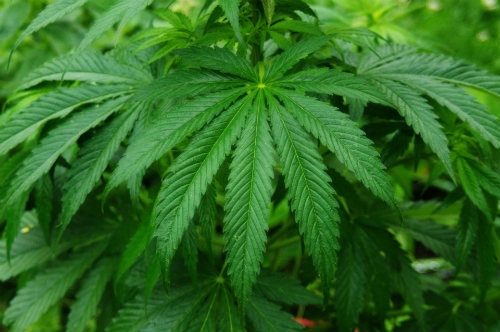
Legislation surrounding cannabis
Growing weed is a whole different ball game. Internationally, it’s impossible to keep up with the legislature regarding growing weed yourself. Every government has its own set of rules that prohibit, regulate or allow growing any type of cannabis. In the Netherlands though, up to five plants can be grown outdoors without professional gear, but that’s not quite legal. We have a policy of toleration surrounding weed and similar soft drugs, despite the Netherlands being known worldwide as “the country where drugs are legal”. In practice that means hemp or weed plants, even 3 of them, may be removed by the police if anyone takes offence. A scent caught by an annoyed neighbor can be enough. So it’s not that legal after all.
Watch out! Do you live in a (social) rental property? Then different rules often apply. Most rental contracts state that growing cannabis is strictly prohibited. Do you do it anyway? In the worst case, you could be evicted from your house, receive a hefty fine and a criminal record.
Hemp grows up to the sky
Hemp is a tall growing plant and is usually grown for industrial applications. Think, for example, of oils, ointments, fibers for clothing and items used in construction. Products made from industrial hemp may be legally sold, bought, consumed and shipped.
Hemp refers to tall, sturdy plants grown by early civilizations for oils, food, and textiles (rope, clothing, and sails). Weed was created by hybridizing varieties of hemp to get the maximum amount of cannabinoids and/or yield. The merchant navy at the beginning of the 17th century ensured that various types of cannabis were also shipped around the world. For example, Afghan, Indian, Brazilian and even Russian strains were crossed to get higher yields and increasingly stronger weed.
That is not to say that cannabis was not used for recreational, medicinal or religious purposes in the past. It is not clear when exactly the use of cannabis flowers for its mind-altering properties began. Cannabis has been found in archaeological excavations in Japan. At over 11,000 years old, those findings are proof of one of the oldest uses of cannabis to date!
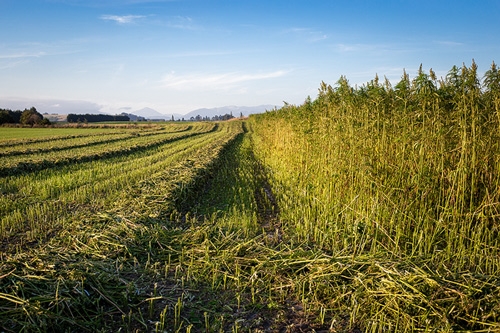
What is being done with hemp?
Hemp can be used in resin, rope, papers, fuel and has many more possibilities. Hemp is very durable due to the fiber length and strength. The long bark fibers have been used to make paper for almost two millennia. Hemp is good for wood-based paper. Hemp is rich in cellulose and contains only 4-10% lignin. But it can also be used for food. Several studies have been done on the consumption of raw hemp seeds, showing that hemp seeds are extremely nutritious. Hemp seeds contain all essential amino acids and have a good balance of fatty acids. For that reason, hemp seed is an excellent source of protein and hemp protein powder is widely sold to sporting vegetarians and vegans.
Hemp and plastic
Plastic that is now often used is made from cellulose. This is obtained from petroleum, which is a product of crude oil. Oil is not only toxic for the environment, but the worldwide stock is also about to run dry. Plastic could also be made from plant cellulose, which is stronger than conventional plastic. In addition, it is also 100% biodegradable. Hemp is a plant with the highest amount of cellulose. The stems of the plant consist of 85% cellulose, which makes it an ideal source for the plastic industry. The hemp can also be processed into a hard and resilient plastic/hemp composite. For example, the dashboard of the BMW i3 is made of hemp composite, but there are many more applications that are not all equally visible.
Hemp as fuel
Hemp can also be converted into a biofuel. If the switch were made, it would have many advantages. Hemp is easy to grow and it is resilient. It therefore promotes self-reliance. Also, it can be made at home and there will be no shortages. Countries should no longer have to worry about fuel shortages. Hemp biodiesel is not toxic, while the fossil fuel-based diesel is. It also has a minimal impact on the environment. The plants themselves absorb the CO2 that is later released. In addition, it is biodegradable.
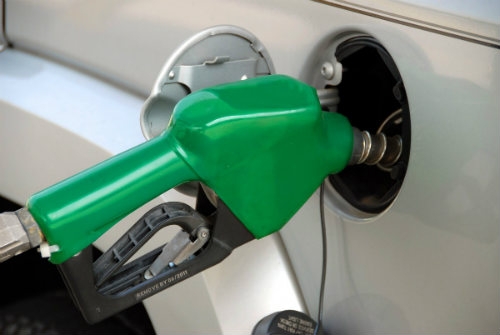
Hemp and Clothing
Hemp is grown all over the world. China and India are the largest producers. A lot of hemp is used to make textiles and it comes mainly from Asia. A hemp plant is fully grown within four months. It can reach a height of up to four meters. Then there are the textile fibers that are extracted from the stem of the plants and the advantage is that no pesticides are needed against weeds and fungi. This is due to the dense foliage of the plant. The plant also makes few demands on the fertility of the soil, so no fertilizer is needed to grow the plant. Hemp is an environmentally friendly product, because the deep roots are also good for the soil.
The plants are typically harvested with a combine harvester. It will then remain on land for 14-21 days (depending on the weather). This ensures that the woody parts are partly separated from the stems of the plant. The fibers slowly but surely become visible. Hemp straw is what remains and that is pressed into bales. Steam explosion is used for processing, which makes it possible to spin hemp on a cotton spinning machine.
Hemp and animal feed
Hemp contains a high nutritional value, which is good for people and animals. The hemp seed is often already used in seed mixes with wild birds. The birds love it. This has to do with the energy-generating properties and the rich oils. These help the birds get through the winter and so they can also maintain their healthy feathers. When a bird adds hemp seed to its diet, it means it can live 10-20% longer and have more offspring. It can also fly longer because of the good quality of the feathers. In addition to the food for the birds, there are many supplements or snacks for your pet.
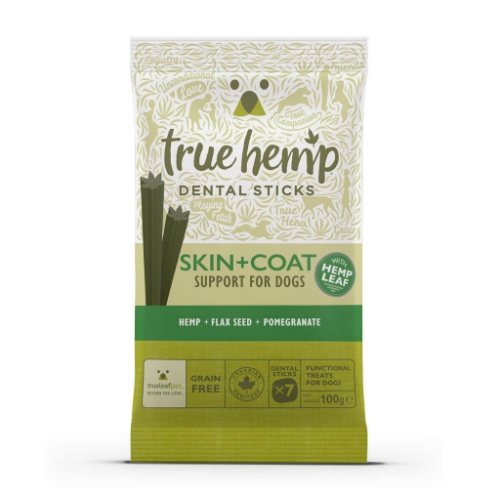
Even more uses of hemp
Hemp can be used in construction, in the car industry, for clothing, for medication, for herbs, for tea, fibers and for hemp seeds. Due to its many uses, hemp is a highly sought-after product that is exceptionally sustainable.
How is hemp saving the world? Below is a brief summary of the sustainability and applicability of hemp plants. Hemp is sustainable because:
- Hemp practically doesn’t need watering
- Pesticides are not necessary
- Hemp can grow 4 meters in a single season
- Hemp enriches the soil for other crops
Hemp is versatile as:
- Biofuel
- Building material
- Plastic / hemp composite (replacement for hard plastics)
- Vegetable plastic (packaging)
- Clothing, rope and sail
- Hemp seed and hemp protein (contains all essential amino acids)
- Hemp seed oil (contains favorable ratios of Omega 3, -6 and -9
- CBD oil and other extracts
- Rich animal feed
- Cosmetics
- Papers